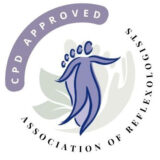WEARING sandals in summer generally means removing ones socks and stockings no longer required for cold weather. Feet cosseted from wearing boots and shoes have usually softened and will feel ultra sensitive when pushed into footwear with thin soles, straps around the ankles or thongs between the toes. One can almost hear the feet and the body groaning as hard skin backs up to protest over vulnerable areas and blisters are a pitiful cry against walking in warm weather or new tight shoes. Even after a pedicure or visit to the chiropodist, there may still be no hiding bunions, bunionettes, red calluses on top of toes, misshapen feet or swollen ankles.
What is a bunion? An excessive pronation of the subtalar joint together with a short first metatarsal is the most common biomechanical factor. As the foot pronates, the centre of gravity moves onto the big toe (hallux) during the toe off phase of gait. This also increases the weight on the first metatarsal in an adduct direction and rotation of the shaft takes place. The hallux compensates by abducting towards the smaller toes and the joint must get bigger to accommodate the added weight. Bunionettes are small lumps like bunions on the little toes. Some bunions are caused by arthritis or trauma. Hammer toes and calluses over the joints are when the toes are pulled or clenched up, often shortening the tendons and rubbing on shoes, although footwear is not always the most common cause. Swollen ankles, puffy feet and legs may only be a circulation problem caused by heat, travelling or a minor injury such as a sprained ankle. More serious or long term swelling may be due to a medical condition where GP advice is necessary.
Traditional remedies from good old fashioned salts and crystals for bathing the feet or to apply as a pack are becoming well known again. Heating up salts to form larger crystals are now manufactured rather than visiting a geyser or smelly sulphur pool on holiday to get the benefits. Salts such as magnesium sulphate (Epsom salts), sodium bicarbonate, sodium borate, sodium carbonate, sodium chloride, magnesium chloride, potassium chloride, calcium chloride, bromide and sulphates are the ones commonly found in many preparations today. Well-known are Epsom salts, so called because Epsom was the town where magnesium sulphate was first distilled from water. Magnesium has been found to help muscle and nerve function, particularly helpful for people who have neurological conditions such as multiple sclerosis (MS), Parkinsons Disease and chronic fatigue. It can help to reduce inflammation around joints, therefore useful for conditions such as arthritis, sports-related injuries or strains and to prevent cramp. Sulphate is believed to have a cleansing effect by flushing toxins out of the body.
Spa towns in England and across Europe with naturally occurring springs, filled with these healthy salts, were once popular destinations for people suffering from all kinds of skin ailments and ill health. There were many cases reported where people felt cured from the bathing.
Today, residential health spas and cruise liners provide thalassotherapy pools, which have the added benefit of seaweed and its mineral content. Floatation tanks with sea salts mimic the Dead Sea experience and the grand baths and rooms which once housed the spas of yesteryear. Salt attracts water, which is why a poultice or a salt pack applied onto a swollen joint or limb can draw fluid away from it and relieve the associated discomfort. Similarly, bathing in salts can have the same effect as well as relieving aches and pains, softening the skin and creating a relaxing feel to the whole body and mind.
Going down to the seaside is where so many people have holidays or days out. The feeling of being so healthy while breathing in the salt air helps the lungs work more efficiently, thereby helping to reduce stress, relax and sleep well. The saltiness of the sea helps keep fungal skin conditions such as Athletes foot at bay and the sand provides a natural exfoliation for the skin helping to beautify the feet. The exertion and exercise tones the feet and body when walking or running on sand, or even doing yoga early morning along the promenade or beach. By this time, hopefully, therapeutic pampering of the feet has taken place and they are no longer sore when wearing sandals. Enjoy the summer!





